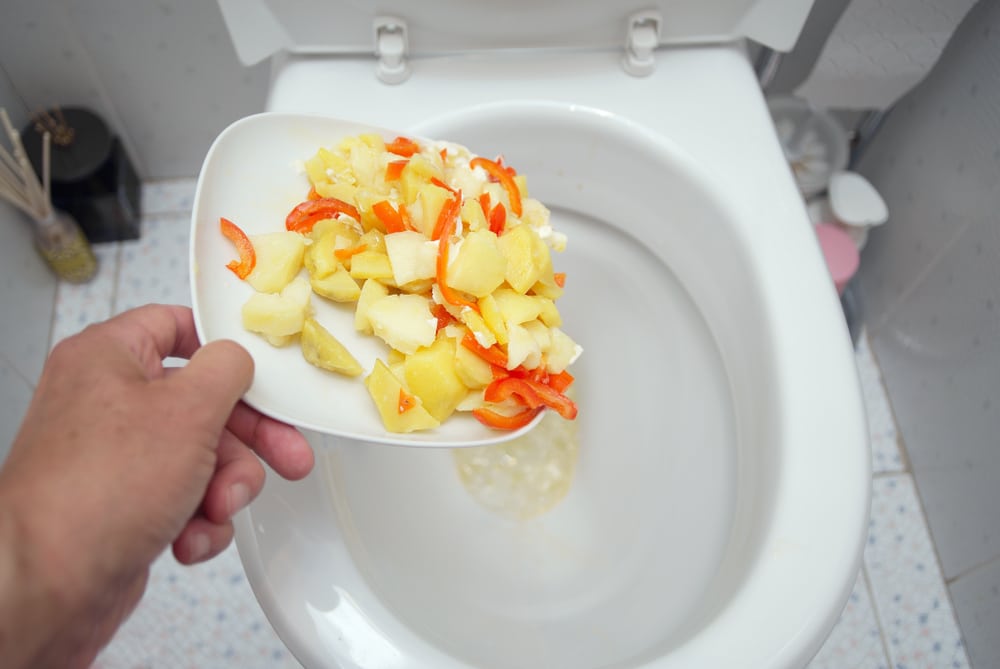Is it Acceptable to Flush Food Down the Toilet?
Is it Acceptable to Flush Food Down the Toilet?
Blog Article
Have you been trying to locate answers about Flushing Food Down the Toilet??

Intro
Many individuals are frequently faced with the problem of what to do with food waste, especially when it concerns leftovers or scraps. One usual inquiry that emerges is whether it's fine to flush food down the bathroom. In this post, we'll look into the reasons why individuals might think about flushing food, the effects of doing so, and alternate methods for proper disposal.
Reasons people might take into consideration purging food
Lack of understanding
Some individuals may not understand the potential damage triggered by purging food down the commode. They might incorrectly believe that it's a harmless technique.
Convenience
Purging food down the commode might seem like a fast and very easy service to disposing of undesirable scraps, particularly when there's no nearby trash bin readily available.
Negligence
In some cases, individuals might just choose to flush food out of sheer negligence, without taking into consideration the repercussions of their activities.
Effects of flushing food down the bathroom
Environmental impact
Food waste that ends up in rivers can contribute to air pollution and damage aquatic ecosystems. Additionally, the water utilized to purge food can strain water sources.
Plumbing issues
Flushing food can bring about clogged up pipelines and drains, triggering expensive plumbing repairs and troubles.
Sorts of food that need to not be flushed
Fibrous foods
Foods with fibrous textures such as celery or corn husks can obtain entangled in pipes and trigger blockages.
Starchy foods
Starchy foods like pasta and rice can absorb water and swell, bring about obstructions in pipes.
Oils and fats
Greasy foods like bacon or cooking oils should never be purged down the commode as they can solidify and trigger clogs.
Appropriate disposal techniques for food waste
Using a garbage disposal
For homes outfitted with waste disposal unit, food scraps can be ground up and flushed via the pipes system. Nevertheless, not all foods are suitable for disposal in this manner.
Recycling
Specific food product packaging materials can be recycled, minimizing waste and minimizing ecological influence.
Composting
Composting is an environment-friendly means to deal with food waste. Organic materials can be composted and made use of to enhance dirt for horticulture.
The significance of proper waste monitoring
Lowering environmental damage
Proper waste monitoring practices, such as composting and recycling, assistance minimize contamination and maintain natural deposits for future generations.
Safeguarding pipes systems
By staying clear of the method of flushing food down the toilet, homeowners can protect against costly plumbing repairs and maintain the stability of their plumbing systems.
Final thought
Finally, while it may be appealing to purge food down the toilet for ease, it's important to comprehend the potential repercussions of this activity. By taking on correct waste management techniques and taking care of food waste sensibly, individuals can add to healthier pipes systems and a cleaner environment for all.
FLUSH FOOD DOWN THE TOILET?
FLUSHING FOOD CAN CAUSE BLOCKED DRAINS IN YOUR HOME
All of the plumbing fixtures in your home are connected to the same sewer pipe outside of your home. This outdoor sewer pipe is responsible for transporting all the wastewater from your home to the Council sewer mains. Even small pieces of food that go down the kitchen sink can cause problems for your sewer. It should therefore be obvious that flushing larger bits of food, such as meat, risks a clog in either the toilet itself or the sewer pipes. Flushing greasy food is even more problematic because oil coagulates when it cools, coating the interior lining of your pipes.
THE TOILET IS NOT A BIN
Food isn’t the only thing that people shouldn’t be flushing down the toilet. People use the toilet to dispose of all kinds of things such as tampons, makeup wipes, dental floss, kitty litter and even underwear. Water goes to great lengths to educate residents about the high costs and stress placed on wastewater treatment systems simply from people flushing the wrong stuff down the toilet. It costs taxpayers millions of dollars each year, and homeowners thousands in blocked drain repairs.
FLUSHING FOOD IS A WASTE OF WATER
Flushing food is a waste of our most precious resource - water. In June this year Level 1 water restrictions were introduced to protect water supply from drought conditions. Much of New South Wales continues to be affected by prolonged drought with recent figures revealing up to 97 per cent of the state remains in drought. Depending on whether you have a single or dual flush toilet, every single flush uses between five and 11 litres of water. In the current climate this is a huge amount of water to be wasting on flushing food that should be placed in the bin (or better yet, the compost).
https://www.jabplumbingsolutions.com.au/blog/can-you-flush-food-down-the-toilet

We had been brought to that article about Flushing Food Down the Toilet? through someone on our other web page. Please set aside a second to share this write-up if you appreciated it. I appreciate reading our article about .
Click For More Information Report this page